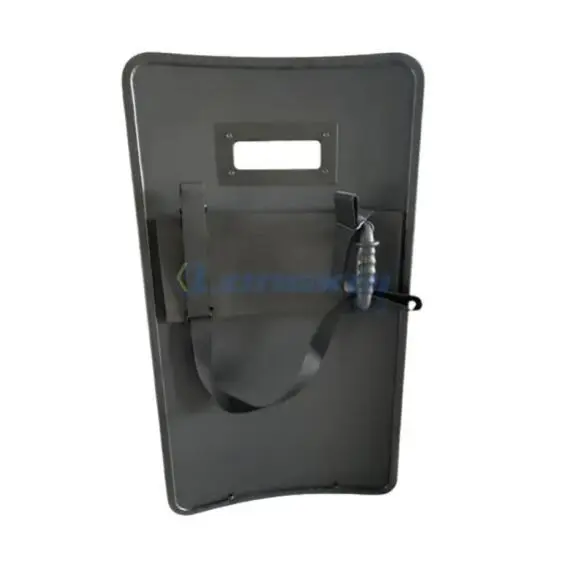Feb. 19, 2024
Police use riot shields as protective gear during civil disturbances, protests, and riot control situations to safeguard themselves and maintain public order. Here are the primary reasons why riot shields are employed by law enforcement:
1. Personal Protection:
Police Riot shields serve as a critical form of personal protective equipment for police officers facing potentially violent crowds or individuals. Made from durable materials such as polycarbonate or ballistic-grade plastics, these shields provide a barrier against thrown objects, projectiles, and physical assaults, helping to reduce the risk of injury to officers.
2. Crowd Management:
Riot shields are instrumental in crowd management and control during civil disturbances or protests. By forming a physical barrier, police officers can create a line of defense to deter aggressive behavior, control the movement of crowds, and prevent unauthorized access to restricted areas. The presence of riot shields can also serve as a visual deterrent, discouraging confrontational behavior and encouraging peaceful assembly.
3. De-escalation:
In addition to their protective function, riot shields can be used as tools for de-escalation and conflict resolution. By establishing a physical barrier between police and protesters, ballistic shields provide officers with a means to maintain a safe distance and create space for dialogue and negotiation. This can help defuse tensions, reduce the likelihood of violence, and promote peaceful resolution of disputes.

4. Tactical Advantages:
Featured content:Riot shields offer tactical advantages to law enforcement agencies in managing dynamic and unpredictable situations. They can be used in conjunction with other crowd control tactics and equipment, such as batons, tear gas, or water cannons, to maintain control and restore order when necessary. Riot shields also provide officers with flexibility in maneuvering and adapting to changing circumstances while maintaining a cohesive line.
5. Legal and Ethical Considerations:
The use of riot shields is guided by legal and ethical considerations aimed at safeguarding the rights and well-being of both law enforcement personnel and the public. Proper training and protocols ensure that riot shields are deployed responsibly and proportionately, minimizing the risk of excessive force or indiscriminate use. Additionally, the visibility of riot shields allows for increased accountability and oversight, helping to uphold standards of professionalism and accountability in policing practices.
Conclusion:
In conclusion, police use riot shields for a variety of reasons, including personal protection, crowd management, de-escalation, tactical advantages, and adherence to legal and ethical standards. These versatile pieces of equipment play a crucial role in ensuring the safety of law enforcement officers and the public during civil disturbances and maintaining public order in challenging situations. Proper training, protocols, and oversight are essential to ensure the effective and responsible use of riot shields in law enforcement operations.
Moreover, the design and deployment of riot shields have evolved over time to better meet the needs of law enforcement agencies and respond to emerging threats and tactics. Modern riot shields may feature additional features such as ergonomic handles, transparent sections for improved visibility, and modular attachments for enhanced versatility.
Furthermore, the use of riot shields is often accompanied by comprehensive training programs for police officers to ensure their effective and safe utilization. Training includes instruction on proper handling techniques, teamwork strategies, de-escalation tactics, and the legal and ethical considerations of crowd control operations. By equipping officers with the necessary skills and knowledge, law enforcement agencies can mitigate risks and promote professionalism in riot control scenarios.
Overall, riot shields are indispensable tools for police officers tasked with maintaining public safety and order in challenging and potentially volatile environments. When employed judiciously and in accordance with established protocols, anti-riot shields contribute to the protection of both law enforcement personnel and the communities they serve, while upholding principles of democratic policing and respect for human rights.
Previous: None
Next: None
Related Articles
If you are interested in sending in a Guest Blogger Submission,welcome to write for us!
All Comments ( 0 )